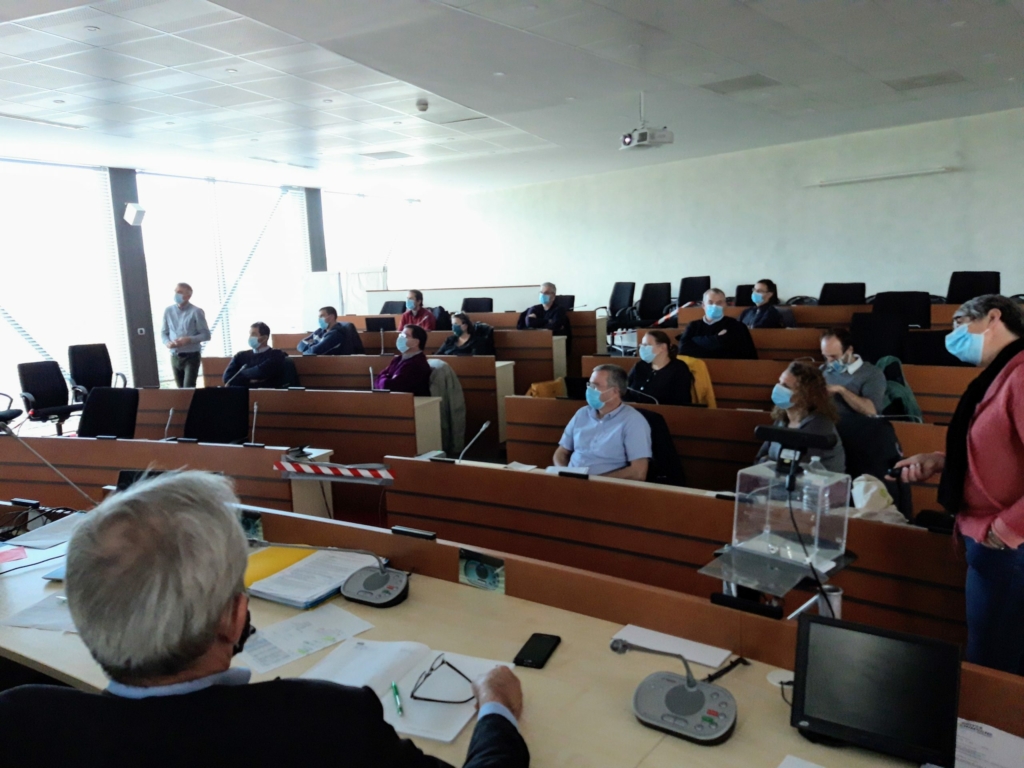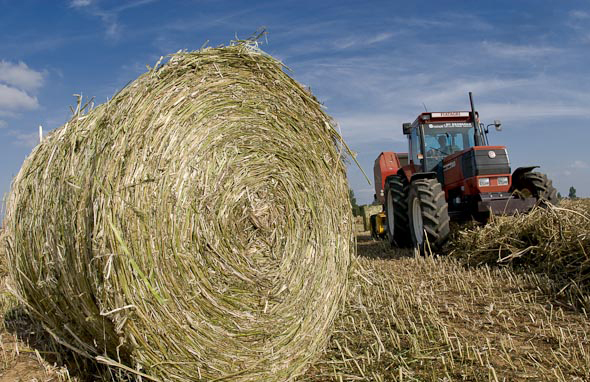Hemp: secure, contract-based production
The Chamber of Agriculture, partner of the Hemp European Hub
The Hemp European Hub structures the ecosystem of the hemp sector to extend the use of industrial hemp to new sectors: construction, automotive, textiles, food, cosmetics, etc. To supply these new markets, it is essential to anticipate production needs and constantly improve technical itineraries.

“Farmers are ready to grow hemp to meet the various markets. For Jean-Luc Follot, Territories Manager at the Aube Chamber of Agriculture and leader of the Hemp European Hub’s ‘processes and production’ technical group, “the hemp sector is attracting farmers. There’s no need to advertise now, because there’s more demand than outlets. There’s even a waiting list.
And with good reason: hemp cultivation is subject to a contract with the manufacturer covering tonnage and expected quality. It is not dependent on world prices and provides farmers with a secure income. It is therefore a market based on an upstream order. In the Grand Est region, La Chanvrière draws up production contracts based on the outlets it has committed to and the expected product: retted or unretted hemp, for example.
A crop with few constraints, except at harvest
Rather simple to grow, hemp requires no pesticides and relatively little nitrogen. Hence the enthusiasm of farmers. The harvesting period is more restrictive because it depends on the weather conditions needed to dry and press the straw, which is then stored on the farm. Lastly, a rotation with a return of the crop every 3-4 years on the same plot is recommended. ‘This means that the farmer has to fully understand the constraints of the crop, especially those relating to harvesting and storage, before considering integrating the crop on his farm,’ explains Jean-Luc Follot.
Informed support for farmers
The construction of the Hemp European Hub is therefore essential for the future of the industry and its development. New markets and new applications for hemp will determine whether demand will increase, and therefore whether farmers will have access to this diversification. “Without production, there is no industry. Above all, it’s a question of seeing how the producer benefits financially and how we can secure the industry in terms of quantity and quality”.
The Chamber of Agriculture helps farmers to diversify. “We ask them about their expectations and motivations, advise them, provide them with figures and work on production costs, but in the end it’s up to them to decide what direction their business should take. Most farmers who include hemp in their crops join forces and pool their time and harvesting equipment.
The ‘processes and production’ group at the crossroads of the other technical groups

Comprising around thirty participants, including eight farmers, the Hemp European Hub’s ‘processes and production’ technical group is led by Jean-Luc Follot. Five main themes emerged from the working meetings: agronomy, carbon, quality, harvesting and income.
Agronomic improvements
In terms of agronomy, mechanical weeding and planting are among the top priorities. Optimum sowing dates, tillage stages and management of intercropping cover crops – for example, the date and method of destroying cover crops – need to be fine-tuned to encourage hemp to establish itself successfully. Experimental plots are set up on farmers’ farms to test and identify best practices.
Increasing yields
At the same time, every year Terres Inovia, a member of the Groupe Technique, conducts a national survey of all hemp producers. These testimonials and references will help to identify the key factors for success in growing hemp. The study will lead to an analysis of the yields obtained depending on the terroirs and the processes used. This will enable us to build up a veritable database of the knowledge we need to develop our cultivation techniques.
Hemp is winning over more and more farmers and is continuing to develop. The structuring of industrial outlets will over time shape demand for raw materials. The new La Chanvrière plant in Saint-Lyé has doubled its production capacity and should enable us to ramp up our supply. Autant de signaux favorables pour l’essor d’une culture saine et rémunératrice. And a structured, profitable economy.
Tests and work by the Hemp European Hub’s ‘processes and production’ technical group. Exemples.
1 – Mechanical weeding
Trial plots are being set up on a farmer’s farm to test methods and tools for weeding hemp fields.
The curry harrow and the cereal hoe are compared at different stages of the crop. The test measures the effectiveness of the methods and their impact on the crop in order to make recommendations.
2 – Income
Setting up an observatory of production charges and costs.
Analyse farms and identify those that generate the best returns. Explain it.
3 – Nitrogen
Does hemp need to be fertilised differently depending on how it is used?
Which harvesting method is best: seed and straw together or separately? Trials will be launched in spring 2022.


